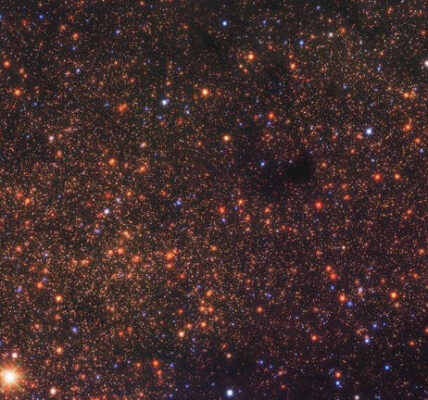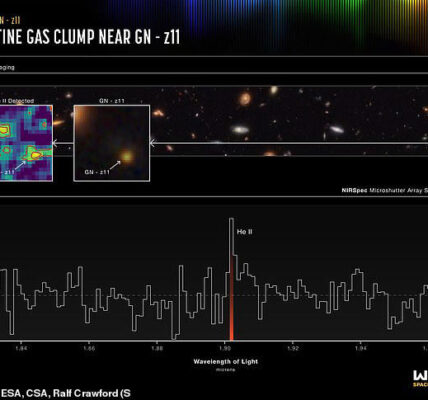“Mysterious Radio Signal 8 Billion Years: 5 Incredible Discoveries!”
Mysterious Radio Signal 8 Billion Years: Astronomers have detected an extraordinary radio signal from the depths of space, traveling for 8 billion years, shedding light on cosmic mysteries.

Table of Contents
ToggleMysterious Radio Signal 8 Billion Years
Astronomers have made an astonishing discovery with the detection of a mysterious radio signal 8 billion years in the making. This powerful signal, known as FRB 20220610A, is a series of fast radio bursts (FRBs) that have journeyed across the universe for billions of years before finally reaching Earth. The implications of this discovery could be monumental for our understanding of the cosmos.
What Are Fast Radio Bursts?
Fast radio bursts are intense flashes of radio waves that last only milliseconds but can emit an incredible amount of energy. The recent signal detected, FRB 20220610A, is particularly remarkable not only because of its age but also due to the sheer strength of its emissions. In just a few milliseconds, this signal releases as much energy as our sun generates in 30 years. This intensity raises intriguing questions about their origins and the mechanisms behind their formation.
The Journey of FRB 20220610A
The mysterious radio signal 8 billion years ago has traveled through vast expanses of space, a journey that offers insights into the early universe. Scientists believe that studying such ancient signals can provide valuable information about the conditions and events that occurred long before our solar system formed. By analyzing FRB 20220610A, astronomers hope to unravel some of the secrets of our universe’s history.
Possible Origins of the Signal
One of the most captivating aspects of FRBs is their unknown origins. While researchers have speculated on various sources, a leading theory suggests that these signals may be linked to magnetars. Magnetars are highly magnetized neutron stars, remnants of massive stars that have exploded in supernovae. The intense magnetic fields and rapid rotation of magnetars could be responsible for the powerful bursts of energy we observe.
Dr. Stuart Ryder, an astronomer from Macquarie University in Australia, is among those studying FRBs. He highlights the potential of these signals to aid in creating a new map of the universe’s structure. The ability to connect these signals to specific cosmic events could revolutionize our understanding of astrophysics and cosmology.
The Mystery of Missing Matter
One of the compelling reasons to study FRBs, including the mysterious radio signal 8 billion years in the making, is their potential to help solve the mystery of missing matter in the universe. Observations have shown that the total weight of normal matter—like stars, planets, and galaxies—doesn’t match the amount of matter scientists believe should exist. This discrepancy raises questions about dark matter and dark energy, which together make up a significant portion of the universe.
Understanding FRBs could provide clues about the distribution of matter in the universe and help fill in the gaps in our knowledge. By analyzing how these signals interact with their surroundings, astronomers may uncover more about the nature of dark matter and the overall structure of the universe.
Implications for Cosmology
The implications of the mysterious radio signal 8 billion years old extend beyond simply understanding individual signals. If scientists can establish a reliable method for detecting and analyzing FRBs, these phenomena could become valuable tools in cosmology. They might help researchers map the universe’s expansion, study the distribution of galaxies, and even explore the conditions of the early universe.
Dr. Ryder emphasizes that FRBs are common and hold great promise. Their ability to penetrate dense cosmic materials means they can reach us from regions of space that are otherwise difficult to study. As more signals are detected and analyzed, we may be able to construct a more comprehensive picture of the universe.
The Future of FRB Research
As technology advances, so does our capability to detect and study fast radio bursts. New telescopes and observational techniques are being developed, which will enhance our ability to capture these fleeting signals. The more FRBs we observe, the better we can understand their properties and origins.
The discovery of FRB 20220610A is just one piece of a much larger puzzle. Each new signal provides researchers with data that could potentially lead to groundbreaking insights about the cosmos. The quest to unravel the mystery of fast radio bursts and their connection to the universe’s structure continues.
Conclusion
The mysterious radio signal 8 billion years in the making is not just a fascinating phenomenon; it represents a gateway to understanding the universe in ways we have only begun to explore. As scientists delve deeper into the study of FRBs, we may unlock answers to some of the most profound questions in astrophysics and cosmology.
With ongoing research and the development of new technologies, the future looks promising. The mysteries of the universe are waiting to be uncovered, and FRBs could play a vital role in our quest for knowledge. The journey of FRB 20220610A is just the beginning of what could be a transformative era in our understanding of the cosmos.
Related:
Astronaut Overview Effect: 5 Stunning Insights That Will Change Your Perspective


